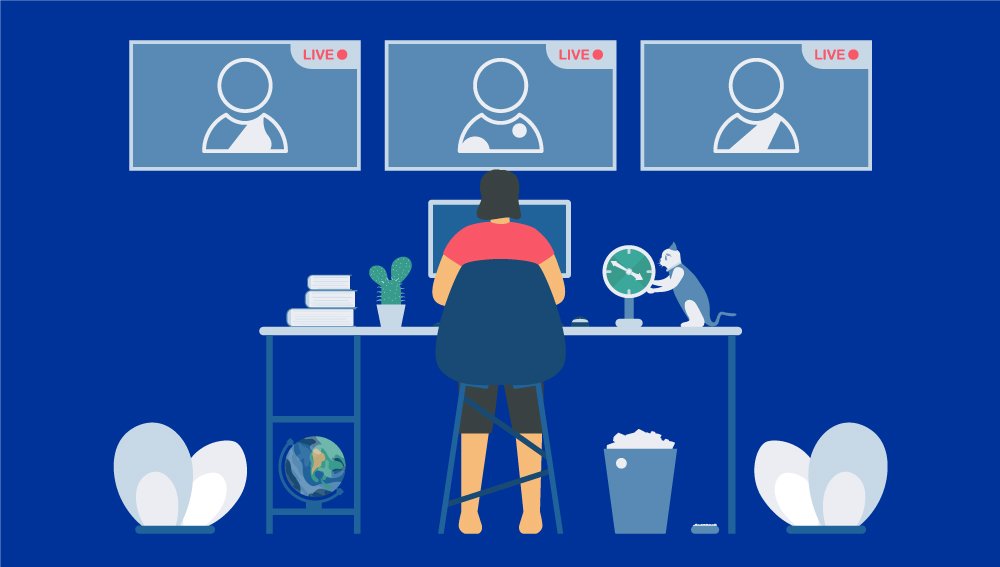Remote work has grown deep roots in the workplace. But even for companies where there’s no going back, there’s still plenty of work to do in transitioning to a more digital workstyle.
When businesses first went remote at the start of the pandemic, they were operating mostly in survival mode. They didn’t have a strong infrastructure in place to support a distributed workforce and simply had to respond to changes as they arose. That’s no longer the case now — the dust has settled and more companies are working toward “perfecting” the remote-first workstyle.
Let’s look at some best practices you can follow to truly ease the transition to a (more) digital workplace.

Get a Bird’s Eye View of Your Digital Workplace
Work doesn’t translate precisely when moving from on-site to a hybrid or digital environment. From accessing systems and supplies to collaborating with team members, companies need to rethink how jobs should function.
That’s why your transition should start with a big-picture blueprint. Think about how you can coordinate all of your departments and company initiatives across a distributed workforce. Some food for thought includes:
• How will employees get to know each other, especially outside of their departments?
• How should you facilitate communication?
• How can employees share their voice on company-related matters?
• What will opportunities for advancement look like?
• How will progress and performance be monitored and managed?
This isn’t an exhaustive list by any means, but these ideas demonstrate how important it is to consider every angle.

Develop a Remote-Friendly IT Infrastructure
IT is the backbone of remote work. It’s the nuts and bolts that enable employees to access systems and software, collaborate in separate locations, and keep business going.
Companies need to think carefully about their IT infrastructure and how it affects business continuity. No longer focused on on-site networking and intranets, companies may need to upgrade or entirely revamp their IT products and services.
Areas to consider include, but are not limited to:
• Remote IT design
• Custom hardware and/or software solutions tailored to remote work (e.g., time tracking, productivity reporting, etc.)
• Ongoing IT support
• Cloud services for remote access
• Devices and equipment for home use (e.g., power backups, workstations, etc.)
When shifting to a remote or hybrid workforce, your existing IT solutions may not be enough. Learning more about the way employees work remotely can inform decision-making for new IT investments.

Maintain Your Company Culture
Companies don’t lose their mission, values, and culture when employees start working offsite. Arguably, it becomes more important than ever to maintain those priorities and make employees feel like a part of them.
Since employees are not present on-site every day and therefore don’t have the benefit of seeing those around them reflect the company culture, business leaders need to think about they can recreate their values in a digital-first environment.
Culture is a direct reflection of what your business thinks, says, and does. You can communicate these values every day to your remote employees with every touchpoint. Keep employees informed about what’s happening in the company. Send branded company newsletters highlighting achievements, goals, and other positive news. Get senior staff involved in how you want to share your vision for the company so they can use the same tone, style, and emotion you want the company to be known for.

Streamline Office Supply Fulfillment
Remote workers no longer have free access to the office supply cabinet. And even though most of their work is now taking place using digital tools, they may still have a need for printing services, paper clips, pens, and the myriad of other items left behind in their desk drawers.
The best approach we’ve found is to ask employees about the supplies they need to stock their work-from-home office. Then, take advantage of bulk office supplies orders for businesses to create kits for your employees. This is usually cheaper than having each person buy what they need and receive reimbursement. Once they’re all stocked up, let them know how they can request additional items.
Working with a dedicated office product supplier gives you a single source for all your needs. It’s more streamlined, less paperwork, and more tailored to your unique business.

Becoming a More Digital Workplace Takes Thought and Planning
The shift to a more digital workstyle hasn’t been easy — for companies or their employees. Finding essential tools and partners to bridge the gap can be the difference between companies that struggle with a digital-first approach and those that excel at it.
At HiTouch Business Services, we support companies in all stages of digital operations, from hybrid environments to 100% remote or on-site. Receive only what you need to run your business with confidence so you can focus on what you do best. We provide business services and solutions for every facet of your workplace: Breakroom solutions, print and marketing services, promotional solutions and unique promotional products, IT services and solutions and innovative facility services and solutions.





